‘Methinks HE is like a weasel’ (or is it a beaver?)
Note to the general reader: If it seems I’m overly hard on Professor Dawkins, recall that he has labeled those who do not share his views on evolution as ‘either stupid, ignorant, dishonest, or… evil.’ Since I do not agree with him, I have taken his statement personally.
#
One way to differentiate a useful idiot — the most extreme examples best described as ‘True Believers’ — from an active participator in deceit is via the degree of outright deception (lying) on the part of the individual in question — useful idiots (and especially True Believers) will likewise lie, but not to the same extent.
With you, Professor Dawkins, I was at first convinced that you are of the former category, but the following example of deceit from The Blind Watchmaker is so egregious, and so persistent over the years (given that the book was published in 1986, which gave you plenty of time to correct the ‘mistake,’ if it was such) that it’s obvious you are an active part of the deceit in the neo-Darwinist agenda (see the Huxley quote at the end of my last post).
Although you cannot not know what you’ve done with the ‘weasel’ deception I’ll herein repeat it, for the record:
In The Blind Watchmaker you compare the amino acid sequence of a protein (such as haemoglobin [the formation of the eye would do just as well]) with a sequence of letters in a phrase: you select the line from Hamlet ‘METHINKS IT IS LIKE A WEASEL’ (28 characters, including spaces) and aim to find this by random typing via a computer program. Of course, it is practically impossible that the whole phrase would ever be typed at random (in one go). In ‘real life’ evolution, your computer program is meant to represent the gradual formation of the eye by random mutation/natural selection.
You envisage that a random sequence of 28 characters (the number of characters including spaces in the phrase) is typed and there is some way of recognizing whether any of the letters are correct, and if so, fixing them so that they do not change. The sequence is then selectively copied again (and again and again, etc) – keeping the right letters fixed, but at each of the remaining places another character is selected at random. If any of these are ’right’ then these too are recognized and fixed, and the selective copying continues. Not surprisingly, with this sort of process it does not take many rounds of selective copying (generally a few 10s) to end up with the right sequence.
As a general illustration of how cumulative selection might work if one assumes evolution has foresight it is acceptable. But since you (and Darwin) have ruled out foresight — meaning a ‘target’ — what you have done is indicate design (in the formation of the eye, in this case). Insofar as you differentiate ‘single-step’ evolution from ‘cumulative evolution’ you have proved that the eye could not have formed via the former, via your own calculations, which come at the end of your explanation (which I’ve put in bold):
By repeating the procedure, a randomly generated sequence of 28 letters and spaces will be gradually changed each generation. The sequences progress through each generation:
Generation 01: WDLTMNLT DTJBKWIRZREZLMQCO P [2]
Generation 02: WDLTMNLT DTJBSWIRZREZLMQCO P
Generation 10: MDLDMNLS ITJISWHRZREZ MECS P
Generation 20: MELDINLS IT ISWPRKE Z WECSEL
Generation 30: METHINGS IT ISWLIKE B WECSEL
Generation 40: METHINKS IT IS LIKE I WEASEL
Generation 43: METHINKS IT IS LIKE A WEASEL
Dawkins continues:
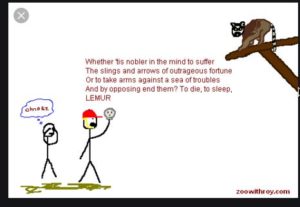 The exact time taken by the computer to reach the target doesn’t matter. If you want to know, it completed the whole exercise for me, the first time, while I was out to lunch. It took about half an hour. (Computer enthusiasts may think this unduly slow. The reason is that the program was written in BASIC, a sort of computer baby-talk. When I rewrote it in Pascal, it took 11 seconds.) Computers are a bit faster at this kind of thing than monkeys, but the difference really isn’t significant. What matters is the difference between the time taken by cumulative selection, and the time which the same computer, working flat out at the same rate, would take to reach the target phrase if it were forced to use the other procedure of single-step selection:about a million million million million million years. This is more than a million million million times as long as the universe has so far existed. (my emphasis)
The exact time taken by the computer to reach the target doesn’t matter. If you want to know, it completed the whole exercise for me, the first time, while I was out to lunch. It took about half an hour. (Computer enthusiasts may think this unduly slow. The reason is that the program was written in BASIC, a sort of computer baby-talk. When I rewrote it in Pascal, it took 11 seconds.) Computers are a bit faster at this kind of thing than monkeys, but the difference really isn’t significant. What matters is the difference between the time taken by cumulative selection, and the time which the same computer, working flat out at the same rate, would take to reach the target phrase if it were forced to use the other procedure of single-step selection:about a million million million million million years. This is more than a million million million times as long as the universe has so far existed. (my emphasis)
Your computer program, while supposedly demonstrating ‘cumulative selection,’ actually defines ‘One step’ selection, which you readily admit cannot, in a statistical sense (see the above odds), account for the eye, or any macro change in organ formation (or body type).
Professor Dawkins, as you have to know by now — since what I am saying here has been reiterated multiple times since the book’s publication — what you have ‘proved’ is the polar opposite of what you claim. You have, in effect, showed design in action.
For your model to work, and as you have repeated many times, albeit in other contexts, there can be no ‘target’ in the process of Darwinian evolution. Yet here you are, brazenly defining a target, presumably hoping your readers will not notice the deceitful 180 turnaround.
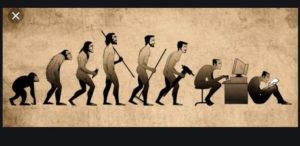
For those readers who can’t (or won’t ) accept that Dawkins would so blatantly deceive his reader, he himself admits his offense, although he waits long enough (in the text) so the reader likely will not realize he has done so:
Although the monkey/Shakespeare model is useful for explaining (1) the distinction between single-step selection and cumulative selection, it is misleading in important ways. One of these is that, in each generation of selective ‘breeding’, the mutant ‘progeny’ phrases were judged according to the criterion of resemblance to a distant ideal target, the phrase METHINKS IT IS LIKE A WEASEL. (2) Life isn’t like that. Evolution has no long-term goal. (3) There is no long-distance target, no final perfection to serve as a criterion for selection, although human vanity cherishes the absurd notion that our species is the final goal of evolution. In real life, the criterion for selection is always short-term, either simple survival or, more generally, reproductive success. [my emphases]
Nice try, Professor Dawkins. Not only did you delay the above admissions until your reader had accepted your deceit, but you buried your admission in needless and misdirecting babbling. I’ve numbered the points of importance; the un-emphasized texts are for misdirection only.
In number one (1), you own up to the crucial difference between single-step selection and cumulative selection, the former creating impossible odds of success and the latter showing how such odds could be circumvented. Here, right here, we have the absolute crux of the matter of why Darwinian evolution is impossible. If it is indeed single-step selection that your process of macro-evolution relies upon, we have a QED for debunking it. And even a moderately careful analysis of your passage reveals your admission that this is so.
Number two (2) is truly a beaut of a repetition of this point. ‘Life isn’t like that.’ Indeed, and neither is evolution. Not much to add to that…
Number three (3) merely repeats the point that to aim at ‘Methinks it is like a weasel’ is the metaphorical Big No-No in your Master’s theory of The Origin of Species, i.e., aiming at a target, or foresight.
It bears repeating; The rest of the text is meant to distract the reader from your having admitted to blatantly lying. I especially like the bit about ‘human vanity’ cherishing absurd notions. Get those heads nodding, eh, Professor? NLP in action.
Do you think it’s okay to lie if sometime later you say, ‘Oh, by the way, in that vital passage about how evolution works, I lied’?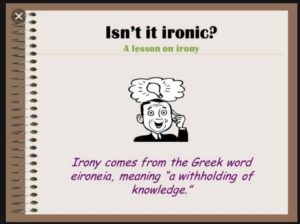
For Irony Fans
Being a fan of irony myself, I’ll quote the following from an edition of Evolution News, wherein a researcher digs even deeper into Dawkins’s hypocrisy, unearthing a spectacular irony. The writer’s name is, appropriately (given the implicit humor), Jonathan Witt.
Something Else Is Rotten in the State of Dawkins’s Weasel Argument
There’s another serious problem with Dawkins’s weasel argument, one that has everything to do with his overdeveloped love of reductionism. Dawkins, the same reductionist who refers to humans as DNA “survival machines,” takes a similarly reductive approach to Shakespeare’s Hamlet, causing him to miss a delicious irony.
To see what I’m talking about, we need a bit more context. Ben Wiker and I spend several pages on this in our book A Meaningful World. What follows is a briefer explanation.
The weasel line comes in Act 3, Scene 2 of the play, in a conversation between Prince Hamlet and Polonius, the king’s chief adviser:
Hamlet: Do you see yonder cloud that’s almost in shape of a camel?
Polonius: By the mass, and ’tis like a camel, indeed.
Hamlet: Methinks it is like a weasel.
Polonius: It is backed like a weasel.
Hamlet: Or like a whale?
Polonius: Very like a whale.
 Before quoting that passage, Dawkins has fun at the expense of all those benighted religious folks who believe in things like an intelligent designer, though he is shrewd enough to come at the whole thing sideways.
Before quoting that passage, Dawkins has fun at the expense of all those benighted religious folks who believe in things like an intelligent designer, though he is shrewd enough to come at the whole thing sideways.
“Sometimes clouds, through the random kneading and carving of the winds, come to look like familiar objects,” he writes. “There is a much published photograph taken by the pilot of a small aeroplane of what looks a bit like the face of Jesus, staring out of the sky. We have all seen clouds that reminded us of something.”
Translation — Hint, hint: Seeing the handiwork of God in nature is almost as silly as imagining that a cloud that resembles Jesus was actually designed to look like Jesus.
Dawkins then introduces the Hamlet/Polonius passage, saying the two men are just commenting on the curious, passing resemblances. But the mention of the Jesus cloud, and the wider context in The Blind Watchmaker, aimed at debunking those religious folks who see design in nature where none exists, suggests the unstated purpose of his selecting this particular scene out of all the scenes and lines written by Shakespeare. That is, seeing design in nature is as misguided as seeing design in the interesting shape of a cloud.
The irony is that, understood in its context, the Hamlet passage is better suited to illustrate exactly the opposite: that is, the tendency of some people to mistake an intelligent cause for a purely natural one. To see this, we need more context than Dawkins provides.
A Death Intelligently Designed
At the beginning of the play we learn that King Hamlet has recently died and that the king’s brother, Claudius, has managed to seize the throne before young Prince Hamlet could return home from university. Claudius also married the widowed queen, Hamlet’s mom, within a couple of months of the funeral. Hamlet doesn’t think much of his uncle Claudius, and he’s depressed about his father’s death and his mother’s speedy remarriage.
Prince Hamlet, though, doesn’t know the half of it at this early stage of the play. He eventually discovers that Claudius poisoned King Hamlet in order to usurp the throne and take the man’s wife. King Hamlet, in other words, didn’t simply die of old age. He was murdered.
What did old King Hamlet’s chief adviser, Polonius, do in all this? While he fancies himself a man of penetrating insight, Polonius remains oblivious of any wrongdoing and quickly aligns himself with the new King Claudius. Polonius also orders his beautiful daughter, Ophelia, to keep away from Prince Hamlet, assuming Hamlet is just toying with her affections and has no intention of marrying so far beneath him.
So Hamlet dislikes Polonius on two grounds: Polonius has cut Hamlet off from the woman he loves, and Polonius is a clueless court toady who imagines he’s wise and courageous.
In the scene quoted above, the two men actually are only pretending to think the clouds look like particular animals. Some cinematic versions emphasize this by staging the scene inside the palace so that the men aren’t even gazing at actual clouds. So what’s going on?
Hamlet is acting nuts, acting as if he is “seeing things.” But there is method to his madness. He’s using the cover of madness to poke fun at Polonius for being such a clueless yes-man. First, Hamlet gets Polonius to agree that the “cloud” looks like a camel, then a weasel, then a whale. Hamlet is revealing that the sycophantic Polonius will agree to almost anything a royal tells him.
Put yourself in Hamlet’s place. He desperately needs Polonius’s help in proving King Claudius’s guilt, but Polonius is too busy toadying up to the new king to harbor any suspicions of the man. Polonius sees what he wants to see and ignores what is convenient for him to ignore.
The whole scene and the wider tension between the two men, in other words, actually involves Polonius’s refusal to see intelligent design where it actually exists — namely, in the designed death, the murder, of old King Hamlet. Polonius attributes the old king’s death to purely blind, material causes when in fact the king’s death was intelligently designed — that is, foul play.
Richard Dawkins Is Polonius
One parallel to the origins science debate, then, is that Richard Dawkins is a modern day Polonius: He ignores the evidence of intelligent design that should be abundantly clear to him.
And the moral, if we’re willing to draw a line so far afield from the original play to our present context: Don’t be Richard Dawkins. Don’t mistake an intelligent cause for a natural one. Don’t miss the wider context: the evidence that not only living cells but our living planet, our solar system, and the laws and constants of physics and chemistry are all finely tuned to allow for living things such as camels and weasels and whales — and, to marvel at it all, scientists and poets alike. [End quote]
#
Well done, Jonathan Witt! I should mention, however, that I do not agree completely with the Discovery Institute’s take or presentation of their Intelligent Design argument. Although there will be more on this in an upcoming post, suffice to say that they should have limited themselves to proving Darwin (and Dawkins and neo-Darwinism) wrong and let those who want to believe in an Intelligent Designer (God or whatever) do so ‘on their own time.’ For me — and possibly for logic’s sake — debunking random mutation/natural selection as driver of evolution — which they have done spectacularly well — does not ipso facto prove an active designer, or Designer. This problem has opened I.D. to the relentless (if dishonest) criticism it has had to endure.
As I say, hang in for more to come on this.
Still Another Irony (back to my ‘Open Letter’)
First a quote from your book The Extended Phenotype:
‘The key point is that the EP embraces constructions, such as the dams built by beavers, whose quality is correlated with variations, or alleles, in certain of the organism’s genes, so that natural selection can act upon them. A new allele that leads to better dam constructions will in turn benefit the beaver expressing it.’
You make much of dam building, specifically using (in the above quote) as an example a random variation that causes the beaver to hold his head higher (than before) while carrying (by swimming) a tree branch toward the dam (or house) in progress, since this would prevent the mud from washing off the wood, which in turn makes the structure more solid.
That this tiny advantage would be pointed out when, as we will see, the whole dam-building enterprise would never get started to begin with, demonstrates your inability to consider how the process would actually work. Call this a minor irony, with the biggie to come.
Professor Dawkins, I’ll now provide a quote I’m sure you will agree with, given it’s all but a paraphrase from The Extended Phenotype. The words are via Dr. Jerry Coyne’s website and concern your favorite example of an extended phenotype — a term referring to a behavior that is genetically imprinted (here, in beavers), in the same sense that, say, a beaver’s tail has been imprinted to improve swimming proficiency:
A beaver dam is probably the most famous example of an extended phenotype in nature, though on the sexual side one could mention the bowerbird’s bowers. Here’s a video of beavers working on their ‘lodge’ or home, which is situated in the middle of the lake created by the dam.
Yes, you neo-Darwinists are truly enamored by beaver dam building, but let’s do what you have obviously never done, Professor Dawkins and look at the step-by-step process of beaver dam-building, and see if it fits this quote from your Master:
“If it could be demonstrated that any complex organ existed [or extended phenotype like beaver dam-building], which could not possibly have been formed by numerous, successive, slight modifications [all of which must have selective advantage], my theory would absolutely break down.”
There can be no doubt that beaver dam building plus the subsequent construction of the animals’ ‘house’ in the middle of the dam-created pond (or full-blown lake) is of great ‘selective’ value.
Your problem (as a neo-Darwinian) is reflected in the amount of time and degree of effort it takes to construct the dam and then the house, keeping in mind that every step must be of selective advantage – recall that random mutation/natural selection has no foresight, i.e., the process doesn’t know that a dam/house will be the final result of the many steps necessary in the construction.
What should already be obvious is that is there not one step – not one – that is of selective advantage, but quite the reverse: Each step will not only expend energy with no up-side, but, given the noise and all-around commotion caused by a construction project of such staggering environmental transformation, will attract predators.
In fact, let’s do what (again) you neo-Darwinists rarely do, and imagine the step-by-step process:
Step one: Cutting down of trees to be used for construction materials. Worthy of note here is the fact that the beaver’s diet is tree bark, not the pith, so the act of felling the tree could only amount to a minuscule amount of nourishment ingested (as the beaver cuts through the bark to get to the interior pith), with a large amount of energy expended.
Or assuming that the beaver drags deadfalls (trees already down) toward the stream to be dammed, we must ask ourselves ‘why’ in the sense of ‘survival of the fittest’ is the beaver doing that? Beavers eat only fresh, living tree bark, so we must ask what sort of ‘random mutation’ could have ‘motivated’ the beaver to do this?
Addendum: I can’t help do what you so obviously did in the video from my last post and do a bit of anthropomorphizing. Imagine a beaver couple, hubby and wifey, and hubby has been at his dam building project for some weeks now, dragging trees around the forest and piling them up by a creek, with wifey looking on in distress, then finally blurting, ‘What the hell are you doing?’
Hubby pauses momentarily in his frenzied work, looks around, and replies, ‘I have no idea, but I just have to do it.’
(The scene from Close Encounters of the Third Kind also comes to mind, as the Richard Dreyfuss character obsessively builds a miniature Devil’s Tower in his living room.)
And by what bizarre practice of ‘trial and error’ would ‘teach’ the beaver the engineering know-how, once he has dragged freshly cut trees or deadfalls to the stream? Professor, you must explain how dam-building behavior (cutting the trees, dragging them and so forth and so on) – before and after this trial and error – results (by some percentage) in this beaver surviving and reproducing more efficiently than another, non-dam-obsessed, beaver. If you cannot do this, then the ‘my theory would absolutely break down’ observation of Charles Darwin inevitably kicks in.
In a final and (aesthetically perfect) irony, you, Professor Dawkins, actually put a beaver on the cover of The Extended Phenotype, apparently ignorant of the fact that the animal’s dam-building behavior does exactly the opposite of what you claim.
Yours truly,
Allan Weisbecker
Yes, I’ve had enough of Richard Dawkins, although I could go on and on and…




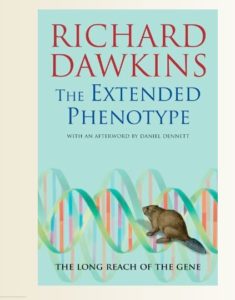

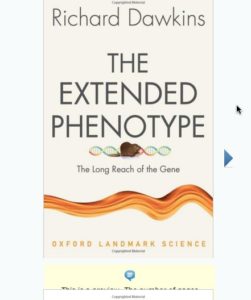
36 comments for “An Open Letter to Richard Dawkins (Part Two)”